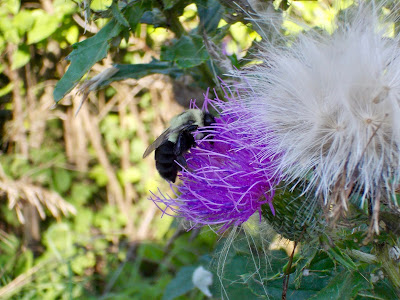I finally have a weekly summary that is worth writing about. Although it was rainy and could covered for most of the week, I was able to get out five days and report checklists. Before I get into that, a little update on stats that I haven't yet posted.
Since my last Sunday Summary, I was able to reach my goal of 100 species in Riley County, Kansas before winter. On September 29 I added four new species to this list; Double-crested Cormorant (Phalacrocorax auritus), Palm Warbler (Setophaga palmarum), Fox Sparrow (Passerella iliaca), and Blue-winged Teal (Spatula discors). These four brought my total to 101, allowing me to make a new goal of seeing 110 species before winter. On the October 7, I added another three species; Common Yellowthroat (Geothlypis trichas), Nashville Warbler (Oreothlypis ruficapilla), and Lincoln's Sparrow (Melospiza lincolnii) bringing my total to 104.
This past week, I was able to add another four species, making my new total for Riley County, Kansas 108; Broad-winged Hawk (Buteo platypterus), Pied-billed Grebe (Podilymbus podiceps), American Coot (Fulica americana), and Wood Duck (Aix sponsa). Only two species left to reach my new goal. The Broad-winged Hawk, Pied-billed Grebe and American Coot were also additions to my overall life list, bringing the total there to 189 species. I can't wait until that number is at 200.
My most observed species this week was the American Coot, with 140 individuals observed over three days. I went from never seeing a single American Coot in my life to seeing them in groups of up to 65 at a time. I have really enjoyed observing them over the last few days, especially since they are about the only waterfowl that seem to be around this area right now.
 |
Belted Kingfisher (Megaceryle alcyon) perched against the beautiful leaves
of fall. |
The picture of the week this week is of a perched Belted Kingfisher (Megaceryle alcyon). I had been observing this female for a few days near the same spot and got a great picture of her at a distance, but could never catch a clear image when she moved closer. Then, while out with my brother-in-law, Anthony, she flew right over us and perched in a branch very near to where we were standing. I fumbled around with the camera for a little bit, due to excitement, and was fortunate enough to get this image on my first shot. I love the fall leaves in the background and I always seem to like pictures that I have had to work for more than those that come easy.
My highlight from the week was taking Anthony birding. He is an Ag teacher at the Blue Valley High School and is developing a new wildlife management course for his students to take. I am fortunate enough that he is allowing me to assist in the development of his curriculum for the course. His students are currently entering their ornithology unit and I have been trying to help him by showing him good places to take kids on field trips and giving tips on how to identify and learn to identify the birds that they observe. Without Anthony there sharing the moment of the Kingfisher I don't thin it would have been quite as special.
I hope that everyone is having a great fall so far (although it is more like winter here with all of the snow).




































